
Ptuj: Slovenia's Timeless Gem
Discover Ptuj: Slovenia's oldest town, rich in history, culture, and natural beauty. From medieval castles to thermal spas, Ptuj offers a unique and unforgettable experience.
Welcome to Ptuj, Slovenia's oldest town, where history and charm intertwine. Nestled along the banks of the Drava River, Ptuj offers a rich tapestry of cultural heritage, stunning architecture, and vibrant local traditions. As you wander through its cobblestone streets, you'll find yourself transported back in time, marveling at well-preserved medieval buildings and ancient Roman relics. Ptuj's crown jewel is its majestic castle, perched on a hill overlooking the town. Inside, the Ptuj Castle Museum showcases an impressive collection of artifacts, from antique weapons to delicate porcelain. The castle grounds also offer breathtaking views of the town and surrounding countryside, making it a perfect spot for photography enthusiasts. The town's thermal spas are another highlight, providing a relaxing retreat for visitors. The Ptuj Thermal Spa is renowned for its healing waters and modern wellness facilities. After a day of exploration, unwind in the warm, mineral-rich pools and let your cares melt away. Ptuj is also famous for its festivals, with the Kurentovanje Carnival being the most notable. This vibrant event, held every February, features traditional costumes, lively parades, and local music. It's a unique cultural experience that brings the town to life and offers a glimpse into Slovenia's rich folklore. For food lovers, Ptuj doesn't disappoint. The local cuisine is a delightful mix of Slovenian and Mediterranean flavors. Be sure to try the traditional dishes, such as 'koline' (homemade sausages) and 'prleška tünka' (pork preserved in lard). Pair your meal with a glass of Ptuj's renowned wine, produced in the nearby Haloze and Slovenske Gorice wine regions. Whether you're a history buff, a culture enthusiast, or simply looking for a peaceful getaway, Ptuj has something for everyone. Its blend of historical charm, natural beauty, and warm hospitality makes it a must-visit destination in Slovenia.
Local tips in Ptuj
- Visit Ptuj Castle early in the morning to avoid the crowds and enjoy the peaceful atmosphere.
- Attend the Kurentovanje Carnival in February for a unique cultural experience.
- Try the local wine at one of the charming wine cellars in town.
- Book a session at the Ptuj Thermal Spa to relax and rejuvenate after a day of sightseeing.
- Explore the town on foot to fully appreciate its historical charm and hidden gems.
Ptuj: Slovenia's Timeless Gem
Welcome to Ptuj, Slovenia's oldest town, where history and charm intertwine. Nestled along the banks of the Drava River, Ptuj offers a rich tapestry of cultural heritage, stunning architecture, and vibrant local traditions. As you wander through its cobblestone streets, you'll find yourself transported back in time, marveling at well-preserved medieval buildings and ancient Roman relics. Ptuj's crown jewel is its majestic castle, perched on a hill overlooking the town. Inside, the Ptuj Castle Museum showcases an impressive collection of artifacts, from antique weapons to delicate porcelain. The castle grounds also offer breathtaking views of the town and surrounding countryside, making it a perfect spot for photography enthusiasts. The town's thermal spas are another highlight, providing a relaxing retreat for visitors. The Ptuj Thermal Spa is renowned for its healing waters and modern wellness facilities. After a day of exploration, unwind in the warm, mineral-rich pools and let your cares melt away. Ptuj is also famous for its festivals, with the Kurentovanje Carnival being the most notable. This vibrant event, held every February, features traditional costumes, lively parades, and local music. It's a unique cultural experience that brings the town to life and offers a glimpse into Slovenia's rich folklore. For food lovers, Ptuj doesn't disappoint. The local cuisine is a delightful mix of Slovenian and Mediterranean flavors. Be sure to try the traditional dishes, such as 'koline' (homemade sausages) and 'prleška tünka' (pork preserved in lard). Pair your meal with a glass of Ptuj's renowned wine, produced in the nearby Haloze and Slovenske Gorice wine regions. Whether you're a history buff, a culture enthusiast, or simply looking for a peaceful getaway, Ptuj has something for everyone. Its blend of historical charm, natural beauty, and warm hospitality makes it a must-visit destination in Slovenia.
When is the best time to go to Ptuj?
Iconic landmarks you can’t miss
Ptuj Castle
Explore the historical grandeur of Ptuj Castle, a captivating museum offering stunning views and a deep dive into Slovenia's rich cultural heritage.

Regional Museum Ptuj Ormož
Discover Slovenia's rich cultural heritage at the Regional Museum Ptuj Ormož, where history and art come together in a captivating experience.

Grand Hotel Primus
Experience luxury and relaxation at Grand Hotel Primus, a premier hotel in Ptuj, Slovenia, offering spa treatments and exquisite dining in a serene setting.

Camping Terme Ptuj
Discover serenity at Camping Terme Ptuj, where nature meets relaxation in Slovenia's beautiful thermal oasis.

Dominikanski samostan Ptuj - Kongresno kulturni center
Explore the serene Dominikanski Samostan in Ptuj - a historical monastery blending art, culture, and tranquility in Slovenia.
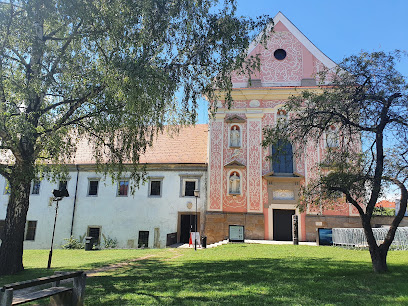
HOSTEL SONCE
Experience comfort and community at Hostel Sonce, your perfect base for exploring the historic town of Ptuj, Slovenia.

Tourist information center Ptuj
Explore Slovenia's oldest city with insights and recommendations from the Tourist Information Center in Ptuj.

Lake Ptuj
Explore Lake Ptuj, Slovenia's largest lake, offering breathtaking scenery, outdoor activities, and rich historical experiences for every traveler.

Archaeological Park Panorama
Experience the rich heritage of Slovenia at Archaeological Park Panorama, where history and nature blend seamlessly in Ptuj's stunning landscapes.

Orfejev spomenik
Discover the enchanting Orfejev Spomenik, an ancient Roman monument in Ptuj, showcasing intricate artistry and rich cultural history.

St. George's Church
Explore the stunning Gothic architecture and rich history of St. George's Church in Ptuj, Slovenia's captivating cultural gem.

Turnišče Castle
Discover the beauty and history of Turnišče Castle in Ptuj, Slovenia, a remarkable tourist attraction blending stunning architecture with cultural heritage.

Marijin steber
Explore Marijin Steber, a historical landmark in Ptuj, Slovenia, showcasing stunning architecture and deep cultural heritage.

Mestni stolp
Explore Mestni Stolp in Ptuj: A historic tower offering breathtaking views and a glimpse into Slovenia's rich cultural heritage.

Sveti Florijan
Discover the rich history and architectural beauty of Sveti Florijan, a monument honoring the patron saint of firefighters in the heart of Ptuj, Slovenia.

Unmissable attractions to see
Trakoscan Castle
Explore Trakošćan Castle, a stunning historical fortress surrounded by beautiful landscapes, combining rich history and art in a single enchanting destination.

Tuhelj d.o.o
Discover ultimate relaxation at Terme Tuhelj, Croatia's premier spa destination, where thermal waters and wellness treatments await.

Krapina Neanderthal Museum
Explore the ancient world of Neanderthals at Krapina Neanderthal Museum, Croatia's premier heritage museum showcasing our prehistoric ancestors.

Old Town, Varaždin
Explore Old Town Varaždin: A Baroque Jewel of Croatia with Rich History and Cultural Heritage, Perfect for Every Tourist.
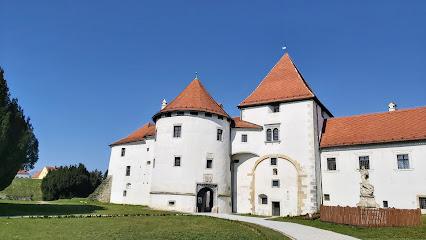
Ptuj Castle
Explore the rich history and stunning views at Ptuj Castle, Slovenia's oldest fortress, nestled atop a hill overlooking the charming town of Ptuj.

Dvor Veliki Tabor
Explore Dvor Veliki Tabor: A historical gem in Croatia offering stunning views, rich culture, and a glimpse into medieval life.

Old Village Kumrovec
Experience the rich cultural heritage of Croatia at Old Village Kumrovec, an open-air museum showcasing traditional village life and history.

Stolna župnija Maribor
Explore the stunning Stolna Župnija Maribor, a Gothic cathedral rich in history and culture, nestled in the heart of Slovenia's charming Maribor.

Varaždin Cathedral
Discover the stunning Varaždin Cathedral, a Baroque masterpiece and vibrant spiritual hub in Croatia, perfect for architecture lovers and history enthusiasts alike.

Babičev mlin
Explore Babičev Mlin in Veržej, Slovenia - a historic flour mill showcasing traditional milling techniques in a beautiful setting.

Cerkev Gospodovega vnebohoda, Bogojina
Explore the architectural beauty and spiritual serenity of the Church of Gospodovega vnebohoda, a unique cultural landmark in picturesque Bogojina, Slovenia.

Varaždin cemetery
Explore the serene beauty and rich history of Varaždin Cemetery, a tranquil monument that reflects the city's cultural heritage.
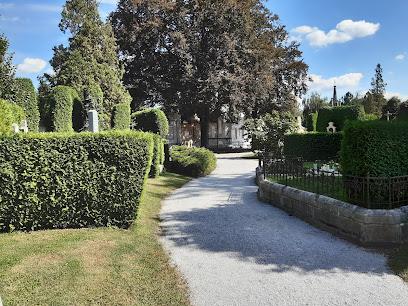
Mestni park
Experience the tranquil beauty and rich history of Mestni Park in Ptuj, Slovenia, a perfect escape for nature lovers and cultural enthusiasts.

Archaeological Park Panorama
Experience the blend of history and nature at the Archaeological Park Panorama in Ptuj, Slovenia, a serene retreat filled with archaeological wonders.

Aljoška Najger Runtas - Nosilka dopolnilne dejavnosti na kmetiji
Experience the best of Slovenian wine culture at Aljoška Najger Runtas Winery, where stunning views and exquisite flavors await

Essential places to dine
Restaurant Pomaranča
Discover Restaurant Pomaranča: A delightful blend of local flavors and international cuisine by the beautiful Drava River in Ptuj.

El restaurante de Poncho
Discover authentic Mexican flavors and delicious pizzas at El Restaurante de Poncho in Ptuj - a culinary hotspot for food lovers.

Gostilna Ribič
Experience exquisite Slovenian cuisine at Gostilna Ribič in Ptuj – where tradition meets modern culinary artistry.

Villa Monde
Discover Villa Monde in Ptuj: A delightful pizza haven blending tradition with modern flavors amidst Slovenia's rich cultural heritage.

Gostilna Rozika
Experience authentic Slovenian cuisine at Gostilna Rozika in Ptuj, where tradition meets taste in every delightful dish.

Restavracija Pizzeria Lili Ptuj
Experience authentic Slovenian cuisine at Restavracija Pizzeria Lili in Ptuj - where every bite tells a story.

Pivnica Zlatorog
Discover authentic pizza flavors at Pivnica Zlatorog in Ptuj - where tradition meets culinary excellence.
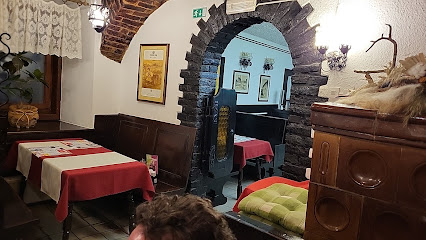
Kitajski vrt ptuj
Experience authentic Chinese cuisine at Kitajski Vrt Ptuj – where every dish tells a story.

Pizzerija Slonček
Discover authentic Slovenian pizza at Pizzerija Slonček in Ptuj – where tradition meets taste in a charming atmosphere.

Gostilna Amadeus
Discover authentic Slovenian cuisine at Gostilna Amadeus in Ptuj – a culinary experience steeped in tradition and flavor.

Gostišče pri Tonetu
Discover authentic Slovenian flavors at Gostišče pri Tonetu in Ptuj – where homemade meals meet heartfelt service.

BLAŽ JAKOPIČEK s.p., okrepčevalnica Raj
Experience authentic Slovenian cuisine at Blaž Jakopiček s.p., where every meal is crafted with care and served with warmth.

Restavracija Amfora
Experience authentic Slovenian cuisine at Restavracija Amfora in Ptuj - where tradition meets taste in a charming setting.

Bistro Lük
Discover authentic Slovenian flavors at Bistro Lük in Ptuj - where culinary tradition meets modern bistro charm.
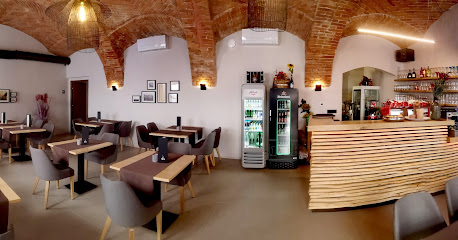
Gostilna Grabar
Experience authentic Slovenian cuisine at Gostilna Grabar in Ptuj—where tradition meets taste in a cozy atmosphere.

Markets, malls and hidden boutiques
Supernova Ptuj
Explore Supernova Ptuj: Slovenia’s Premier Shopping Mall Offering Diverse Retail, Dining, and Entertainment Experiences.

HIŠA DARIL - Ptuj Qlandia
Explore HIŠA DARIL - Ptuj Qlandia, where authentic Slovenian crafts and souvenirs bring a piece of Slovenia home.

C&A
Explore C&A in Ptuj for trendy and affordable fashion, offering a wide range of clothing for men, women, and children in a vibrant shopping atmosphere.

ORSAY
Explore ORSAY in Ptuj for a diverse selection of stylish women's clothing, accessories, and the latest fashion trends in a welcoming atmosphere.

Treasure Chest of Unique Souvenirs
Discover the essence of Slovenia at the Treasure Chest of Unique Souvenirs in Ptuj, where every gift tells a story.

New Fashion Shopping, trgovina z oblačili, Anita Kozel s.p.
Explore contemporary fashion trends at New Fashion Shopping in Ptuj, where style meets quality and personalized service awaits every shopper.

Antikvitete Trop
Explore the enchanting Antikvitete Trop antique store in Ptuj, Slovenia, where history comes alive through unique collectibles and timeless treasures.

Vilu Ptuj trgovina in posredovanje d.o.o.
Experience the charm of Vilu Ptuj, where fashion meets tradition in Slovenia's oldest town, perfect for unique finds and local style.

Kitajski center shop
Explore the unique offerings at Kitajski Center Shop in Ptuj, where local culture meets authentic souvenirs.
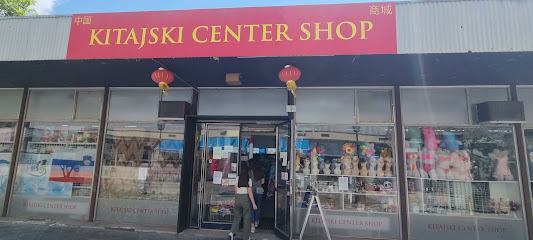
Ptuj
Explore Ptuj, Slovenia's oldest town, rich in history, vibrant culture, and stunning landscapes that captivate every traveler.
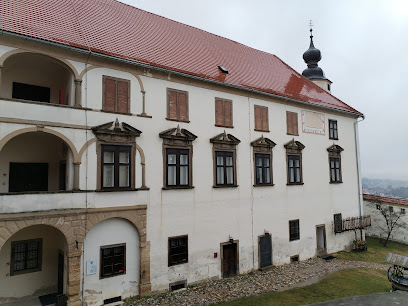
Ploh Monja s.p. trgovina
Explore Ploh Monja in Ptuj for unique local crafts, souvenirs, and a taste of Slovene culture, all in a welcoming environment.

SHOPek, spletna prodaja cvetličarskih izdelkov, Andreja Lah s.p.
Experience the beauty of Slovenian flora at SHOPek, your go-to online florist in Ptuj for exquisite floral arrangements and gardening essentials.

Rudolph Art Shop
Explore the enchanting Rudolph Art Shop in Ptuj for unique Slovenian gifts and local artistry that reflect the charm of this historic town.

PT.WALET
Experience the essence of Slovenia at PT.WALET in Ptuj, where local culture meets unique shopping delights.

Artist
Explore the unique artistry of Slovenia at this charming craft store in Ptuj, where every handcrafted item tells a story.

Essential bars & hidden hideouts
Bar Gabrovec
Experience the warmth of local hospitality at Bar Gabrovec, a cozy bar in Ptuj offering a delightful selection of beverages and a welcoming atmosphere.

Šipek Ivan s.p. - Krona bar
Experience the vibrant ambiance and local flavors at Šipek Ivan s.p. - Krona Bar in historic Ptuj.

bar Divino
Experience the warm ambiance and delicious drinks at Bar Divino, the perfect spot to unwind in Ptuj, Slovenia.

Lina Bar, Irena Tement s.p.
Experience the perfect blend of relaxation and excitement at Lina Bar in Ptuj, Slovenia—where great drinks meet thrilling gaming.

Kava Bar Orfej
Experience the vibrant ambiance and delightful drink selection at Kava Bar Orfej, a must-visit bar in the heart of Ptuj, Slovenia.
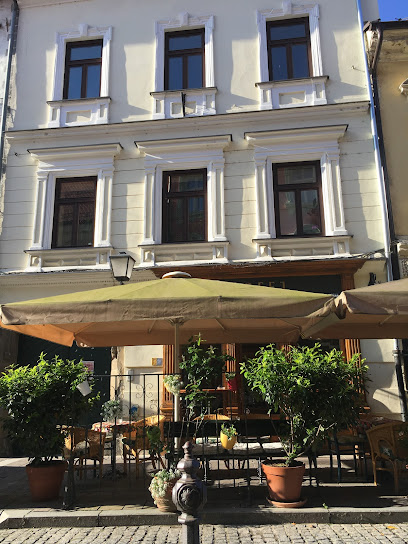
Bar Palma
Discover the vibrant atmosphere and delightful beverages at Bar Palma, a must-visit bar in the heart of Ptuj, Slovenia.

Tarok
Experience the vibrant nightlife at Tarok, a charming bar in Ptuj, Slovenia, known for its local drinks and welcoming atmosphere.

MOON Lounge and Coffe Bar
Discover the cozy atmosphere of MOON Lounge and Coffee Bar in Ptuj, where delightful drinks meet warm hospitality amidst stunning surroundings.

Galleria Cafe
Experience the flavors of Slovenia at Galleria Cafe in Ptuj, where local cuisine meets a welcoming atmosphere for an unforgettable dining adventure.

Feluka Cafe
Discover Feluka Cafe: A lively bar in Ptuj offering a diverse drink menu and a warm atmosphere perfect for relaxation and socializing.

Bar pri žagi, Dušan Krajnc s.p.
Experience the warm hospitality and local flavors of Ptuj at Bar pri žagi, a cozy bar perfect for unwinding and socializing.

Ginko Caffe&Bar
Discover Ginko Caffe & Bar in Ptuj, where delightful drinks meet a cozy atmosphere, perfect for relaxation and socializing in this historic town.

Runda bar, Darinka Jaković s.p.
Experience the warmth and charm of Runda Bar in Ptuj, where delightful drinks meet a cozy atmosphere for the perfect evening out.

Rondo Caffe
Experience the charm of Rondo Caffe in Ptuj, a cozy bar offering a delightful selection of drinks and a welcoming atmosphere perfect for relaxation.

Žaga
Experience the essence of Ptuj at Žaga, a cozy bar offering local beverages in a charming atmosphere.

Local Phrases
-
- HelloŽivjo
[Zhee-v-yo] - GoodbyeNasvidenje
[Nahs-vee-de-nye] - YesDa
[Dah] - NoNe
[Neh] - Please/You're welcomeProsim
[Pro-seem] - Thank youHvala
[Hvah-lah] - Excuse me/SorryOprostite
[O-pro-stee-teh] - How are you?Kako ste?
[Kah-koh steh?] - Fine. And you?V redu. In vi?
[V reh-doo. Een vee?] - Do you speak English?Ali govorite angleško?
[Ah-lee go-vo-ree-teh ahn-gleh-shko?] - I don't understandNe razumem
[Neh rah-zoo-mem]
- HelloŽivjo
-
- I'd like to see the menu, pleaseRad bi videl jedilnik, prosim
[Raad bee vee-del yeh-deel-neek, pro-seem] - I don't eat meatNe jem mesa
[Neh yem meh-sah] - Cheers!Na zdravje!
[Nah zdrahv-ye] - I would like to pay, pleaseRad bi plačal, prosim
[Raad bee plah-chahl, pro-seem]
- I'd like to see the menu, pleaseRad bi videl jedilnik, prosim
-
- Help!Pomoč!
[Poh-moh-ch] - Go away!Pojdi stran!
[Poy-dee strahn] - Call the Police!Pokliči policijo!
[Poh-klee-chee po-lee-tsee-yo] - Call a doctor!Pokliči zdravnika!
[Poh-klee-chee zdrahv-nee-kah] - I'm lostIzgubil sem se
[Eez-goo-beel sehm seh] - I'm illBolj slab se počutim
[Boh-lye slab seh po-chu-teem]
- Help!Pomoč!
-
- I'd like to buy...Rad bi kupil...
[Raad bee koo-peel] - I'm just lookingSamo gledam
[Sah-moh gleh-dahm] - How much is it?Koliko stane?
[Koh-lee-koh stah-neh?] - That's too expensiveTo je predrago
[Toh yeh preh-drah-goh] - Can you lower the price?Lahko znižate ceno?
[Lah-koh znee-zah-teh cheh-no?]
- I'd like to buy...Rad bi kupil...
-
- What time is it?Koliko je ura?
[Koh-lee-koh yeh oorah?] - It's one o'clockJe ena ura
[Yeh eh-nah oorah] - Half past (10)Pol desetih
[Pohl deh-seh-teeh] - MorningJutro
[Yoo-troh] - AfternoonPopoldne
[Poh-pohl-dneh] - EveningVečer
[Veh-chehr] - YesterdayVčeraj
[V-cheh-rahy] - TodayDanes
[Dah-nes] - TomorrowJutri
[Yoo-tree] - 1Ena
[Eh-nah] - 2Dva
[Dvah] - 3Tri
[Tree] - 4Štiri
[Shtee-ree] - 5Pet
[Peh-t] - 6Šest
[Shehst] - 7Sedem
[Seh-dehm] - 8Osem
[Oh-sehm] - 9Devet
[Deh-veht] - 10Deset
[Deh-seht]
- What time is it?Koliko je ura?
-
- Where's a/the...?Kje je...
[K-yeh yeh] - What's the address?Kakšen je naslov?
[Kahk-shen yeh nahs-lohv] - Can you show me (on the map)?Mi lahko pokažete (na zemljevidu)?
[Mee lah-koh poh-kah-zheh-teh (nah zehm-lyeh-vee-doo)] - When's the next (bus)?Kdaj je naslednji (avtobus)?
[K-dai yeh nah-sled-nee (ow-toh-boos)] - A ticket (to ....)Vstopnica (za ...)
[V-stoh-pnee-tsah (zah)]
- Where's a/the...?Kje je...
History of Ptuj
-
Ptuj, known as Poetovio in Roman times, was established as a Roman military fort in the 1st century AD. It soon became a flourishing town, complete with forums, temples, and public baths. The Roman heritage is evident in the numerous archaeological sites and artifacts found in the area.
-
During the medieval period, Ptuj emerged as an important market town due to its strategic location along trade routes. The Ptuj Castle, originally built in the 9th century, was expanded and fortified over the centuries, serving as a key defensive structure and residence for nobility.
-
In the 15th and 16th centuries, Ptuj faced repeated threats from the Ottoman Empire. The town's defenses were reinforced, and several battles were fought to protect it from invasion. The resilience of the town during these times is a testament to its strategic importance and the determination of its inhabitants.
-
Ptuj fell under the rule of the Habsburg Monarchy in the late 16th century. The town benefited from the stability and economic growth brought by the Habsburgs, which led to significant architectural development, including the construction of Baroque-style buildings and churches that still stand today.
-
The 19th century brought industrialization and modernization to Ptuj. The arrival of the railway in 1863 connected Ptuj to larger cities, facilitating trade and commerce. This period saw the growth of new industries and the expansion of the town's infrastructure.
-
Ptuj experienced significant turmoil during both World Wars. In World War I, it served as a supply base for the Austro-Hungarian army. During World War II, it was occupied by Nazi Germany and later liberated by Partisan forces. The impact of these wars is still remembered in the town’s historical narratives.
-
The post-war period witnessed a cultural renaissance in Ptuj. The establishment of cultural institutions, museums, and annual festivals like the Kurentovanje, a traditional carnival, have played a vital role in preserving and celebrating the town's rich heritage and traditions.
Ptuj Essentials
-
Ptuj is located in northeastern Slovenia, approximately 130 kilometers from the capital, Ljubljana. The nearest major international airport is Ljubljana Jože Pučnik Airport (LJU). From the airport, you can reach Ptuj by rental car, taxi, or public transport. Direct trains and buses connect Ljubljana to Ptuj, with the journey taking around 2 hours by train and slightly longer by bus. Alternatively, you can fly into Graz Airport (GRZ) in Austria, which is about 84 kilometers from Ptuj, and then take a train or bus.
-
Ptuj is a small, walkable city with many attractions within close proximity. For longer distances, local buses and taxis are available. The Ptuj train station connects the city to other major Slovenian cities. Renting a bicycle is a popular option for exploring the city's scenic routes. Car rentals are available for those looking to explore the surrounding area at their own pace.
-
The official currency in Slovenia is the Euro (EUR). Credit and debit cards are widely accepted in hotels, restaurants, and shops. ATMs are readily available throughout Ptuj, making it easy to withdraw cash when needed. However, it is advisable to carry some cash, especially when visiting smaller establishments or markets.
-
Ptuj is generally a safe destination for tourists. Standard safety precautions should be taken, such as avoiding poorly lit areas at night and keeping an eye on personal belongings in crowded places. There are no specific high-crime areas targeting tourists, but staying vigilant and aware of your surroundings is always recommended.
-
In case of emergency, dial 112 for immediate assistance. This number can connect you to police, medical services, and fire departments. The local police station and medical facilities are available in Ptuj. It is advisable to have travel insurance that covers medical emergencies. For minor health issues, there are pharmacies in the city where you can purchase over-the-counter medications.
-
Fashion: Do dress modestly, especially when visiting religious sites. Avoid overly casual or revealing clothing. Religion: Do respect local customs and traditions. When visiting churches, it is customary to dress conservatively and remain silent. Public Transport: Do be respectful and give up your seat to elderly passengers. Don't eat or drink on public transport. Greetings: Do greet people with a handshake. A friendly 'Dober dan' (Good day) is appreciated. Eating & Drinking: Do try local delicacies and accept food offerings graciously. Don't refuse hospitality, as it is considered impolite.
-
To experience Ptuj like a local, visit the Ptuj market where you can buy fresh produce and local goods. Engage with locals, as they are often friendly and willing to share stories about the city's history and culture. Don't miss the Ptuj Castle, which offers stunning views of the city and surrounding countryside. Try local wines from the Haloze region, known for their high quality. Attend the Kurentovanje carnival if you visit in February, which is one of the most famous and vibrant cultural events in Slovenia.
Trending Landmark in Ptuj
-
Ptuj Castle
-
Regional Museum Ptuj Ormož
-
Grand Hotel Primus
-
Camping Terme Ptuj
-
Dominikanski samostan Ptuj - Kongresno kulturni center
-
HOSTEL SONCE
-
Tourist information center Ptuj
-
Lake Ptuj
-
Archaeological Park Panorama
-
Orfejev spomenik
-
St. George's Church
-
Turnišče Castle
-
Marijin steber
-
Mestni stolp
-
Sveti Florijan
Nearby Cities to Ptuj
-
Things To Do in Maribor
-
Things To Do in Rogaška Slatina
-
Things To Do in Celje
-
Things To Do in Velenje
-
Things To Do in Zagreb
-
Things To Do in Graz
-
Things To Do in Zalaegerszeg
-
Things To Do in Kamnik
-
Things To Do in Szombathely
-
Things To Do in Keszthely
-
Things To Do in Ljubljana
-
Things To Do in Klagenfurt
-
Things To Do in Škofja Loka
-
Things To Do in Bled
-
Things To Do in Postojna








